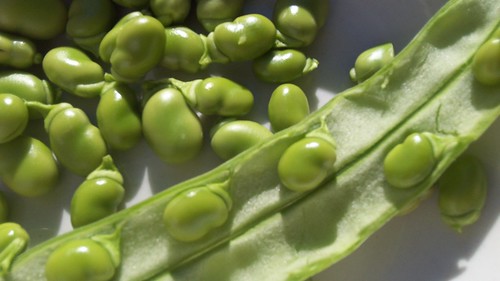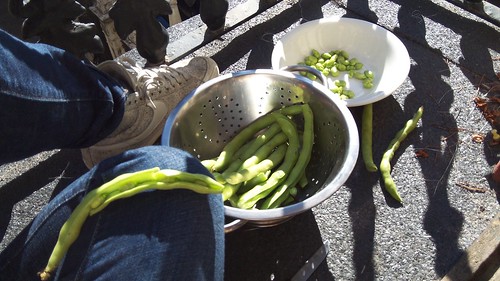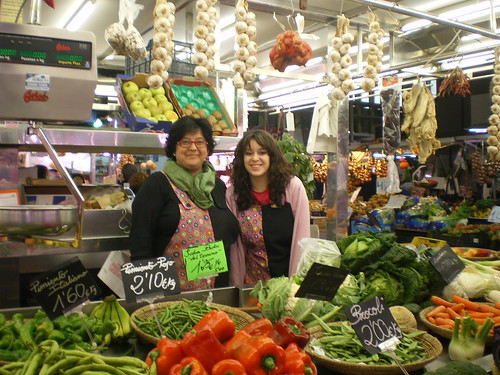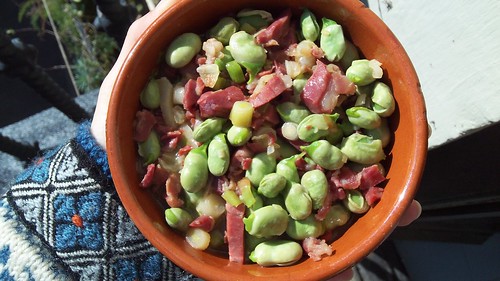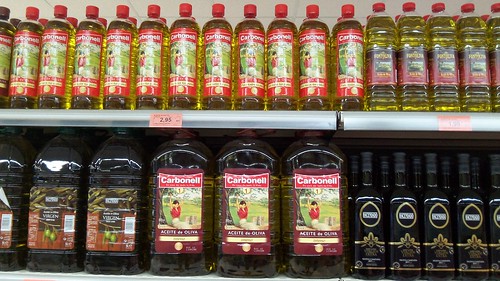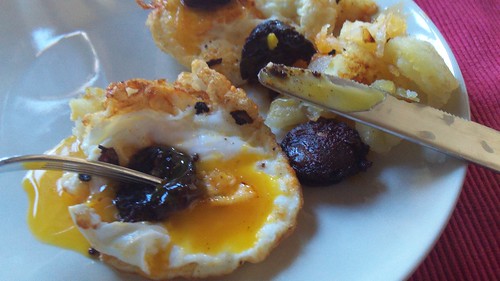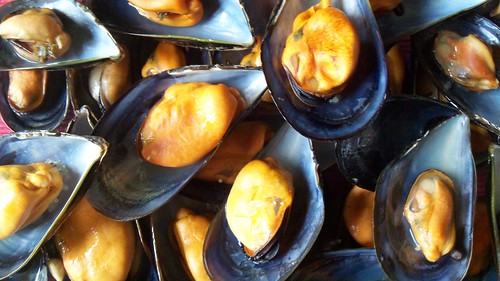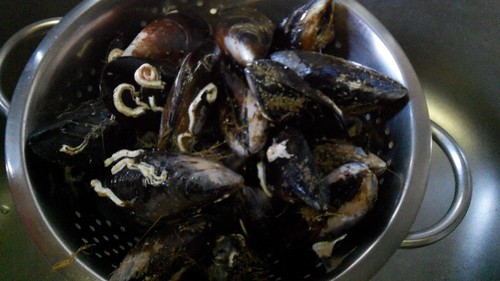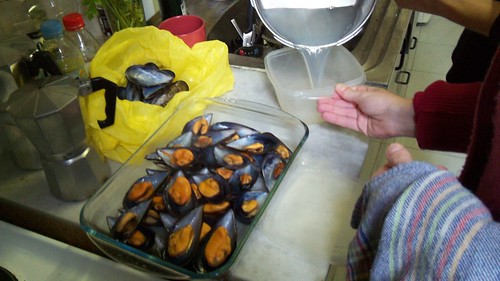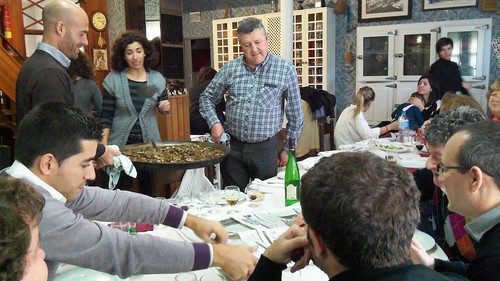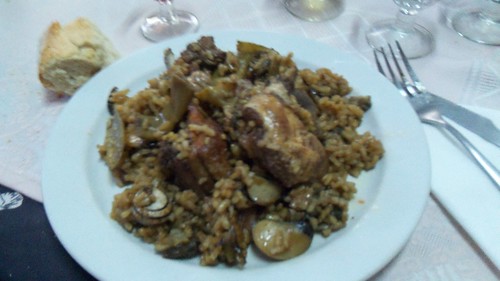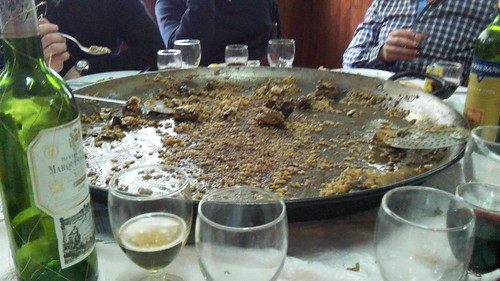A rural romantic at heart, today I perched on my balcony,
picking little habas (broad beans) from velvety pods, happily channelling my
inner Laura Ingalls. I forgot how great they smell, like a summer’s day. They
usually come into season in England in early July, so eating these bad boys in
January has the same effect as smelling Nivea factor 15, you feel a darn sight
better about life. To grow good vegetables you need sun, and since the east
coast of Spain is blessed in this department, they receive yields before northern neighbours. When I saw the mounds of habas fronting every market
stall, I wanted in.
The market sellers were some of my first friends in
Valencia, and since my mime skills have evolved into actual Spanish words, so
begins my vegducation. Pilar, my First Lady of fruit and vegetables has a stall
in Mercado de Ruzafa, it’s run by the whole family. They have a huerta (land for
growing) in nearby Alcasser, where they grow organic vegetables for the stall.
They also sell produce from Valencia, Murcia and Almeria too. I’ve never been
quite sure what do with habas, so I asked Pilar for advice, I arrived home to
find an email intact with the recipe, signed off with un besito muy fuerte (a
strong little kiss). I don't think customer service can get much better than this.
The recipe for Habas Tiernas a la Valenciana required jamon
cortardo en daditos (rough thick shreds of cured jamon) so I trotted off to the
market first thing this morning. Whilst chatting to my fellow queue comrade, I
let her know that I was cooking habas for the first time, noises of approval
rose and I felt and little swell of pride. Following
Pilar’s instructions, I began by gently frying my daditos of jamon, then I added
chopped young garlic, followed by sliced spring onion. When everything had
softened nicely, in went the habas and half a glass of water, a lid
on the pan. Once the majority of the water was absorbed they were ready
to eat. Pilar says they make a great bocadillo (baguette) filling or are wondrous on the
side of any meat, or with a tortilla or a nice little sausage. She speaks the truth.
I’ve boiled the life out of broad beans before but never
cooked them in such a fashion. These humble little habas deserve praise, they
have a gentle freshness of summer, yet are far more complex creatures than
peas, and that texture, a delicious silken tenderness. Together with the jamon
and alliums it’s a mouthwatering combination. Fresh and light and at the same
time rich and creamy. I ate them this morning with a cheeky omlette for
almuerzo (elevenses).
A Veducation part 2, is soon to follow, I’ve got some alcachofas (artichokes) that are asking for it. Un besito muy fuerte readers.
Fork notes:
- These habas were picked young, so are tender and sweet.
- No problem in buying fresh and keeping in the freezer.
- In southern regions such as Almeria you will come across many farms that grow beneath plastic, creating conditions that can yield crops year round with no regard to season. I understand they need to make a buck but I think veg grown the old way tastes better, and yeah there is a smugness to eating what’s in season.
- For some reason you can get the sublimely underrated and brilliant herb, Parsley, for free at nearly every market stall (veg/fish/meat). So remember to ask for your free bundle of fun.

